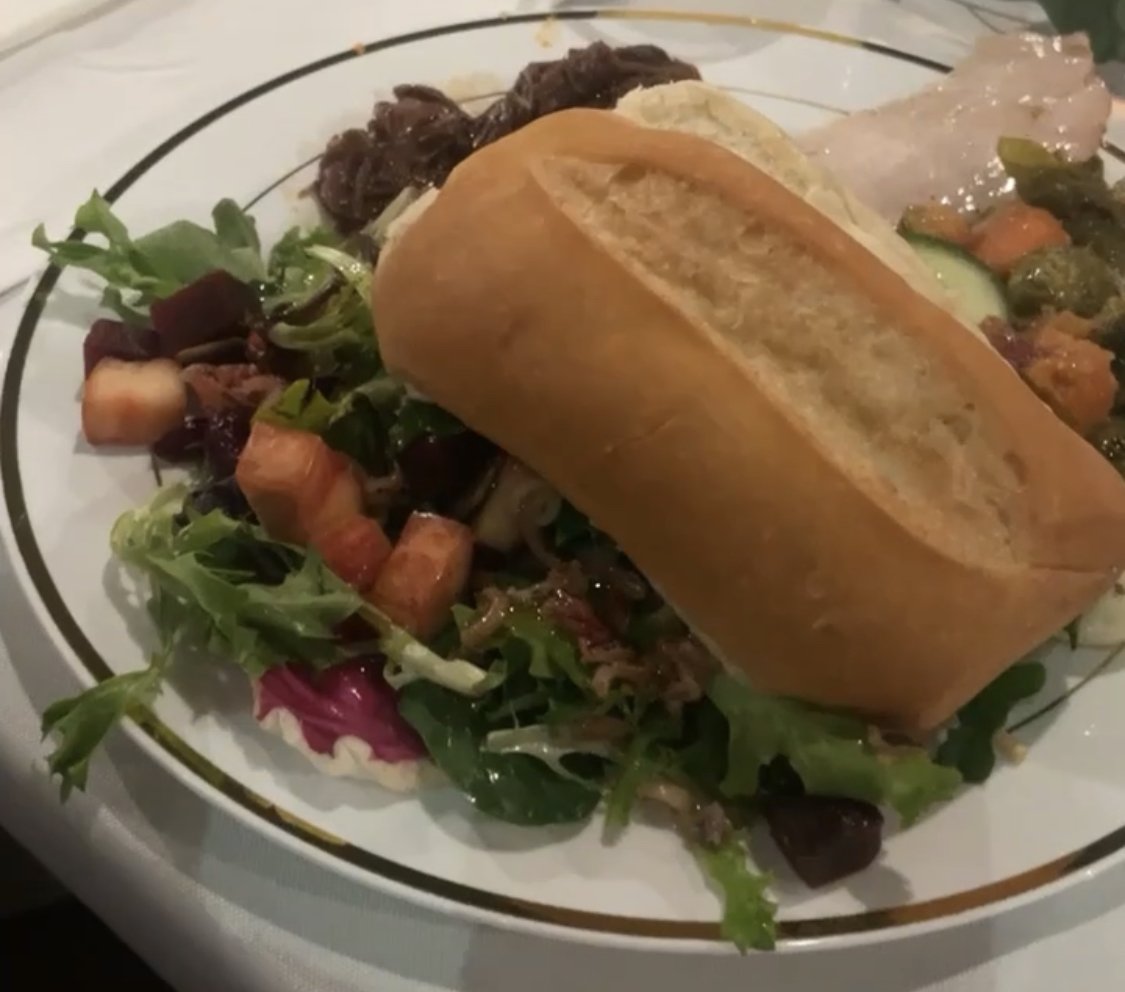I found myself standing in awe as I entered the enchanting Joy Room Chi. Initially, I had no expectations, simply looking forward to a special evening. Little did I know that what awaited me would exceed all assumptions. The numbers and statistics I had overlooked were about to take on a whole new meaning.
A Meal Blessed with Healing Energy
I come from a lineage far removed from my indigenous roots. My ancestors walked a land I have never set foot on, and the people who reside there today are unfamiliar to me. My understanding of Native tribes and their customs is limited, primarily derived from trendy TikTokers and captivating hashtags. But let me tell you, nothing compares to experiencing genuine Native culture firsthand.
The evening began with a powerful speech, delving into the violence that continues to plague the tribes. It shed light on the relentless depletion of their resources and highlighted the indomitable spirit of these resilient people. The room was filled with collective sorrow, an undeniable recognition of a painful history. We had the privilege of hearing their stories directly from the depths of their hearts, expressed through tears and smiles.
The Healing Dance: A Transformation of Vibrations
As the rhythmic beats of the drums reverberated through the room, something shifted within us. We sat in silence, allowing the vibrations to envelop and transport us to a different realm. The intimate setting intensified the impact of each beat, transforming them into a captivating narrative that unfolded before our eyes.
It was an extraordinary experience to partake in the customs of a culture so intricately connected to the land we walk upon, yet so often neglected. The emotions I felt that night were unparalleled, and it was evident that many others in attendance shared the same sentiment.
Cannabis and Culture: A Fusion of Traditions
Cannabis has long been intertwined with various cultural practices and traditions, and this evening was no exception. The convergence of cannabis and Native culture added another layer of depth to the experience. It served as a reminder that these two elements, often misunderstood and stigmatized, can be powerful tools for healing, connection, and preserving cultural heritage.
As the night progressed, conversations flowed, and bonds were formed. It was a space where people from diverse backgrounds came together, united by a shared appreciation for the richness of Native culture and the significance of the evening. Stories were shared, laughter echoed through the room, and a sense of unity prevailed.
Leaving the Joy Room Chi that night, I carried with me a newfound appreciation for the importance of cultural preservation and understanding. It served as a reminder that there is so much more to learn and explore beyond the surface-level knowledge we often acquire through social media and popular trends.
FAQs:
Q1: How can I engage with Native culture and support the preservation of traditions?
Seek out opportunities to attend cultural events, visit Native heritage sites, and support indigenous-owned businesses. Educate yourself about their history, customs, and challenges they face. Respectfully engage with Native communities and listen to their voices.
Q2: Is it appropriate to incorporate aspects of Native culture into my own practices?
Cultural appreciation is encouraged, but it’s crucial to approach it with respect, understanding, and permission. Be mindful of cultural appropriation and seek guidance from Native individuals or communities when integrating elements into your own practices.
Q3: What are some other ways to promote cultural understanding and unity?
Engage in intercultural dialogues, support diversity initiatives, and celebrate cultural heritage. Embrace opportunities to learn from different cultures and challenge stereotypes. Remember that unity is achieved through empathy, understanding, and respect.
My evening at the Joy Room Chi was a powerful reminder of the importance of experiencing and appreciating diverse cultures. It allowed me to witness the beauty and resilience of Native culture firsthand and emphasized the significance of cultural preservation. By immersing ourselves in unfamiliar traditions, we broaden our perspectives, foster empathy, and contribute to a more inclusive and harmonious society.


